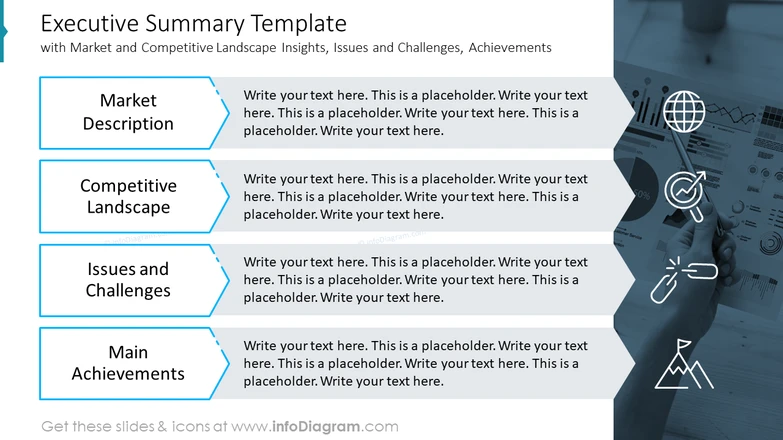
How to Use a Project Summary Template for Project Management
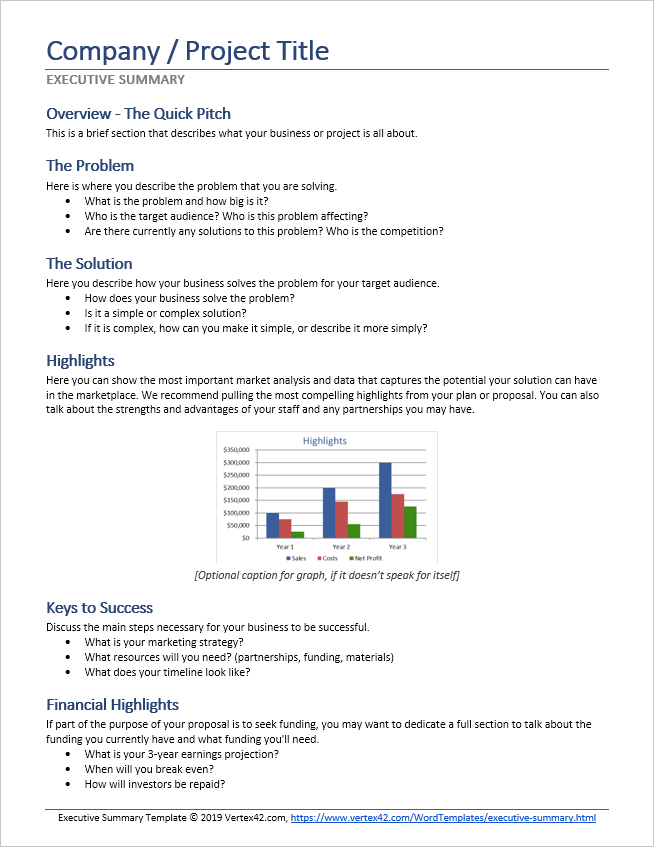
The Project Summary Template is an indispensable tool for project managers and teams, designed to outline crucial project details in a clear, organized, and accessible manner.
This comprehensive document helps streamline planning and execution, ensuring project stakeholders remain informed and engaged throughout the project lifecycle.
This guide will explore the purpose, components, and benefits of the Project Summary Template, along with practical tips for tailoring it to your specific project management needs.
Use this tool and improve your managing skills, foster collaboration, and achieve your objective.
How to Use a Project Summary Template for Project Management
What is a Project Summary?
A project summary is a project management file used in multiple industries to write a project overview. It includes precise information and key details about a project plan.
It’s the first thing key stakeholders read, and it’s also a way to catch the attention of other people involved in the project with high-quality research.
The Project summary is an important piece of the project plan as it shows the main proposal to develop.
You usually include:
The project overview.
The project objectives.
The project background.
Project milestones.
Project ID.
Requirements.
Problem analysis.
Conclusions.
The project proposal is supposed to be one of the key aspects to stand out from the crowd.
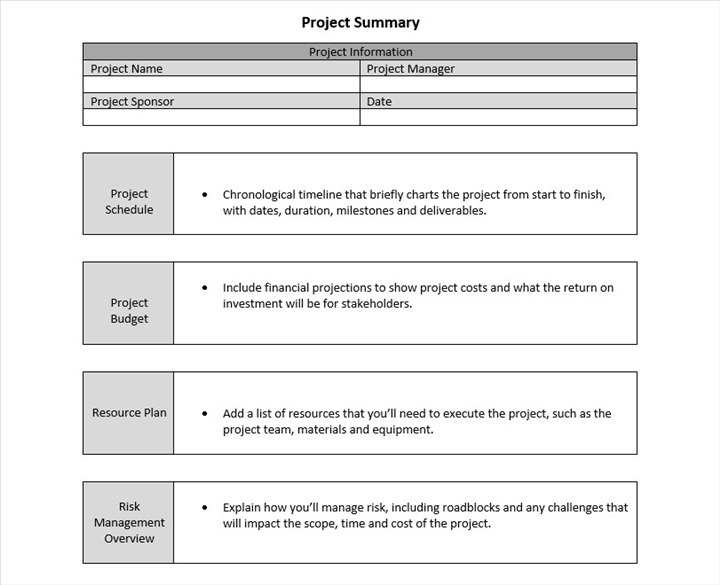
Who Manages a Project Summary?
Project managers control and ensure that project summaries are filled properly for future usage. However, other people can also be part of its management if it directly involves them.
For example:
Sales managers
CEOs
Account managers
The entire management team could oversee a project summary, depending on the company.
When to Use Project Summaries?
Every business or project manager of a project team should use a Project Summary when showcasing updates to stakeholders with an executive summary that all can use as a guide.
This would work as comprehensive guidelines for effective project management for each project.
But who can use this? All people that take part in a business plan, including:
Project managers
Contractors
Service providers
Department CEOs
Benefits of Using Project Summaries
There are clear benefits when using a project summary report on your business. Not only because it clears out the path for development but also because it saves time.
So, here are the advantages of using summaries in your project proposals:
Embraces Clarity
Giving a one-page project summary is better than showing a long and tedious document. Hence, compressing all you must say in a few sentences with essential elements and highlighted information will provide better understanding and increase clarity.
Works as a Roadmap
A project summary report template helps you create a roadmap that will guide you through all the details you need to know to develop the project.
It will also provide insights into the project’s lifecycle and future updates.
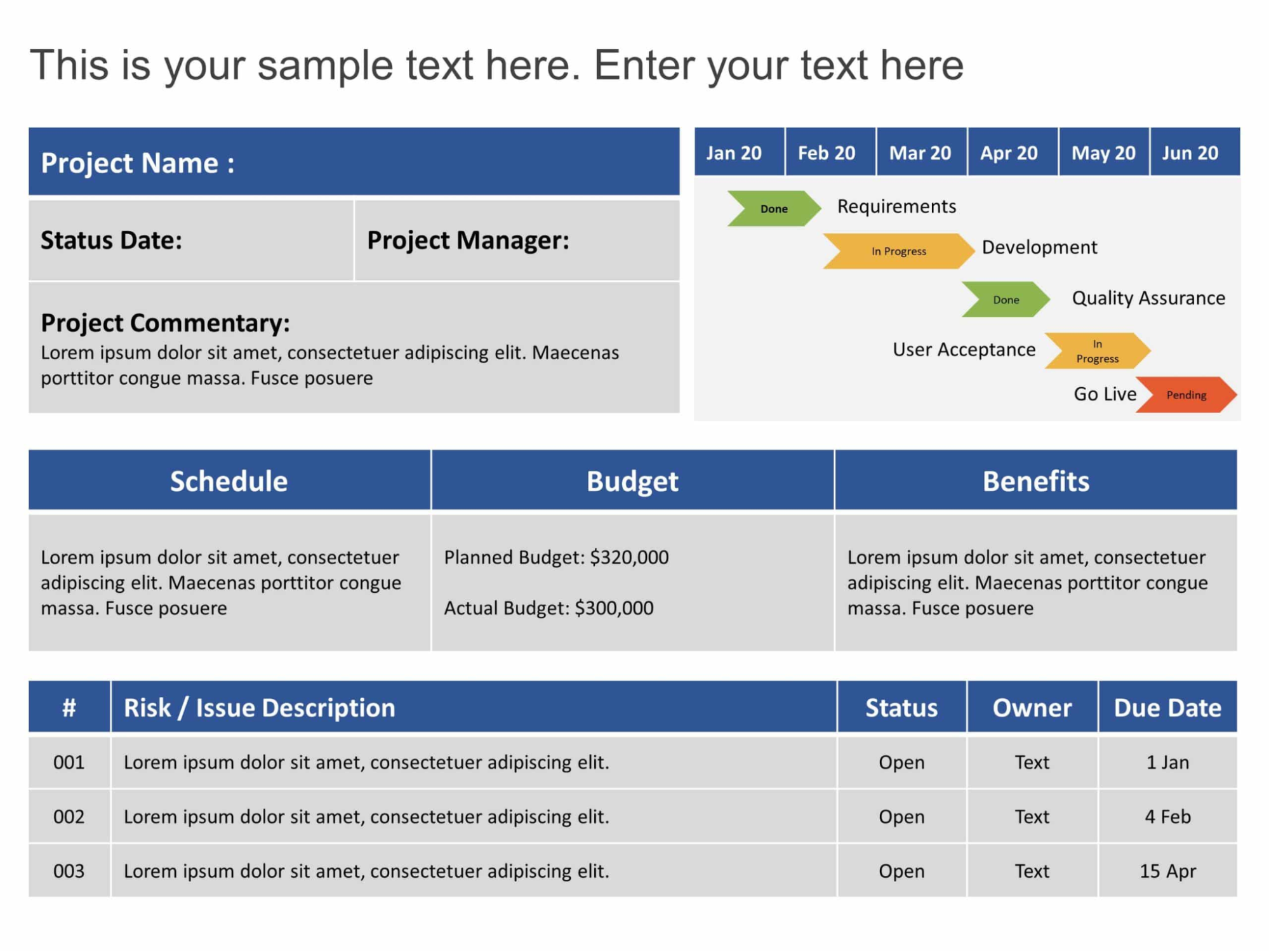
Reduces Reading Time
The project brief (or summary) reduces the time of execution for current and future projects due to its reduced words.
Internal and external stakeholders can read each project phase quickly and then use the key information without wasting too much time.
Drawbacks of Using a Project Summary
A project summary doesn’t have as many flaws as you would think. However, there are some things you should consider before creating one and using it on your project:
Doesn’t include all project’s information.
It needs to be constantly updated as the project progresses.
It’s easy to misunderstand.
Too many people can manipulate it.
Doesn’t consider customer feedback.
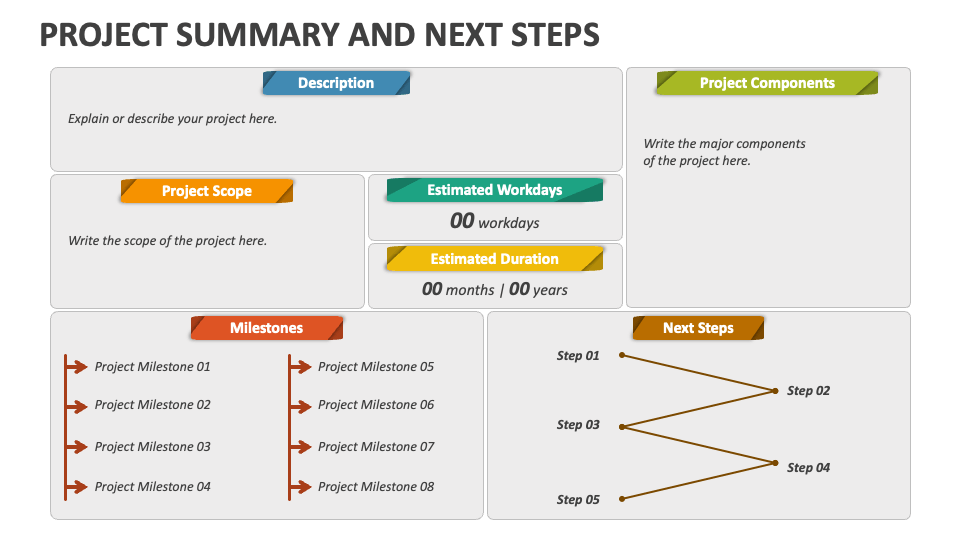
What Should a Project Summary Include?
You must include the necessary information in your summary to use it properly with your audience.
Below we break down what you need to add and a few other sections that could work great depending on your project.
Introduction
The introduction is the first text people will read about your project. It includes basic information like:
Contact details.
Company name.
Project name.
Project goals.
ID.
Project phase.
Release date.
Current project roadblocks.
If you want to make a more traditional executive summary, you can include the employees' names and a short explanation of why the project matters.
Project Overview
The project overview is a brief explanation of your project. Compared to the introduction, you get more details here.
Present key updates and current project status to help readers understand where you’re standing. You also should include your projections and what you’re aiming to develop.
Be concise and focus on what matters, answering three main questions: how, why, and what.
Challenges and Risks
Every project has risks and challenges, and it’s the project manager’s responsibility to embrace them and prepare a plan against them.
The project summary should include a brief section where you address them and possible solutions from the management team.
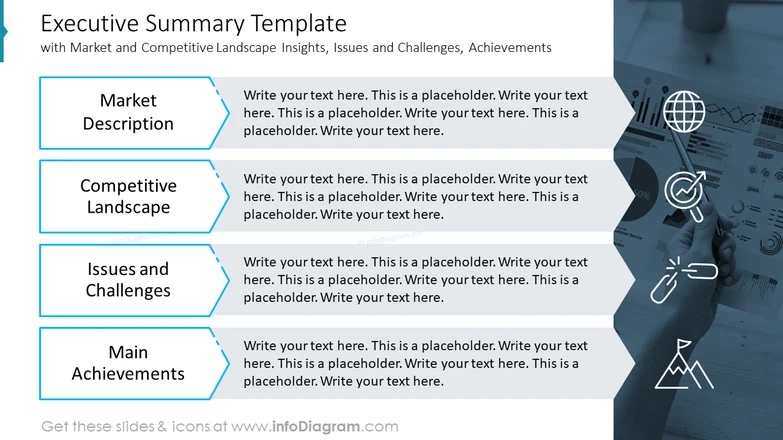
Timeline
Every project follows a chronology based on the project plans and critical path. Your summary should include the following:
Dates.
Events.
Actions to complete the projects.
Deliverables and milestones.
This is an excellent way to let your stakeholders know how you track progress.
Deliverables
Deliverables are all the work-related things you will deliver after finishing the project.
They can be:
Physical items.
Digital products.
Software.
A document
You should not include unrealistic results, so ensure all you include will be provided during end dates.
People Involved (Optional)
People’s completed projects. Hence, part of the relevant information you could include in your summary is the people working on the chosen project.
This will help reach a transparent communication and identify the staff.
KPIs (Optional)
KPIs (Key Performance Indicators) are important points to add to your summary to stay organized.
Although it’s an optional point, adding how you’ll measure success aligns with the summary's objective: getting the attention of stakeholders or the target audience.
How to Write a Project Summary
After learning the parts a project summary should cover, here’s how to write it.
Consider your project plan's scope, goals, start date, and other relevant information before beginning.
Brainstorm Objectives
A summary can’t be taken lightly. You need to think of the objectives of why you want to create the document.
Meet up with your team, discuss, consider key elements, and identify common mistakes that could appear due to the project’s complex information.
Determine Company Goals
Establish your goals according to internal and external purposes. Align them to your audience and team.
Make sure you understand the entirety of the project and create useful objectives. At this point, this is not a high-level overview and becomes a more precise summary.
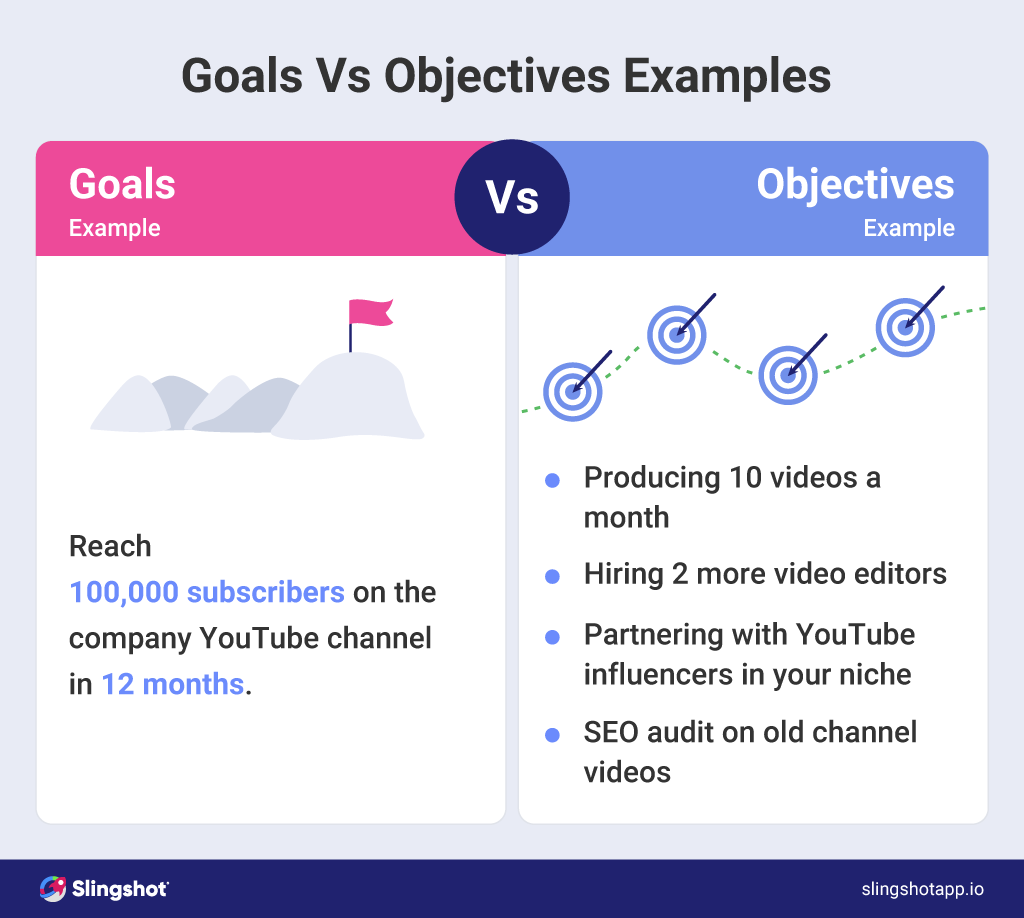
Choose Your Target Audience
Who are you creating the summary for? Is it stakeholders, clients, or your team?
Once you decide on your “customer base,” you can aim for the summary and include important information, Gantt charts, or any other data according to their needs and preferences.
Prepare the Project Summary Report
Now it’s time to get your summary done. Write it from scratch or use project summary report templates to understand better where to start.
Using Project Summary Templates
When preparing your executive summary projects, you will need good productivity software to use a project executive summary template and include everything you need to improve readability.
Microsoft Office 2021 edition is an excellent option for it. You can prepare a simple summary to a more complex document that includes a market analysis with financial information.
This software allows you to use Word or Excel to add important elements that you can use for external or internal purposes and achieve better results with your project.
Now, you can use a few templates to prepare your project summary in no time. Here are some examples:
Project Summary Template #1
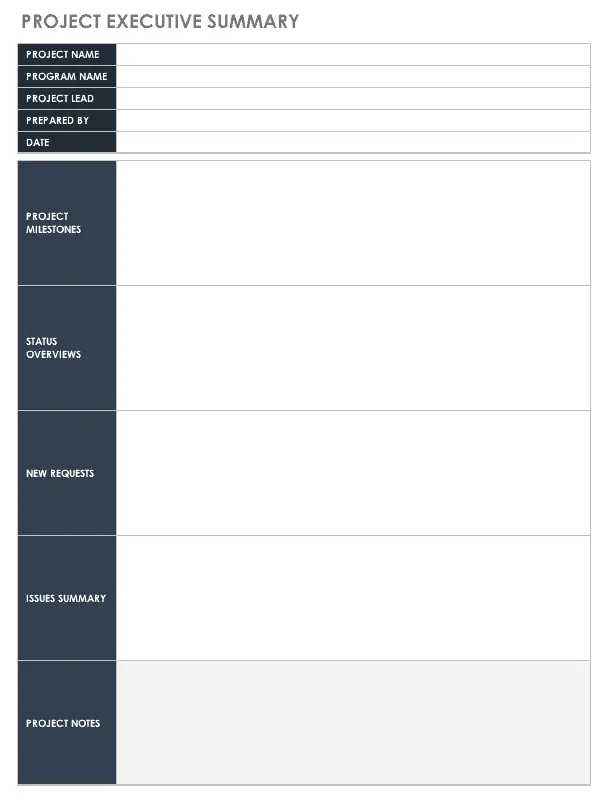
Free project summary template that includes a status overview and project milestones - Download Link
Project Summary Template #2
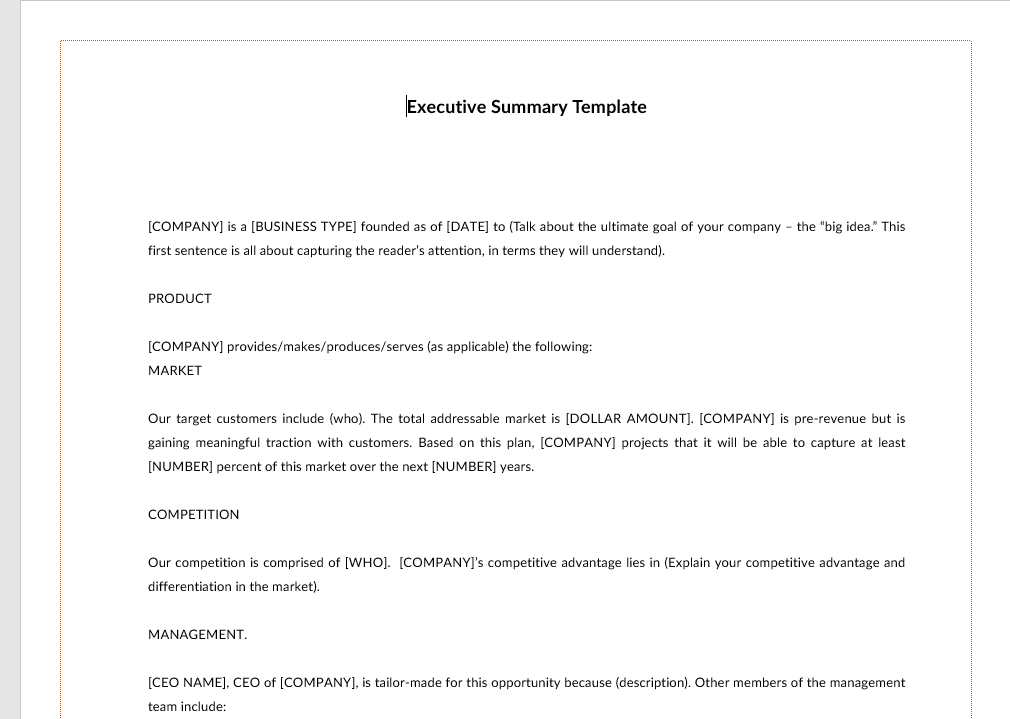
Easy project summary template. A straightforward document focused on text - Download Link
Project Summary Template #3
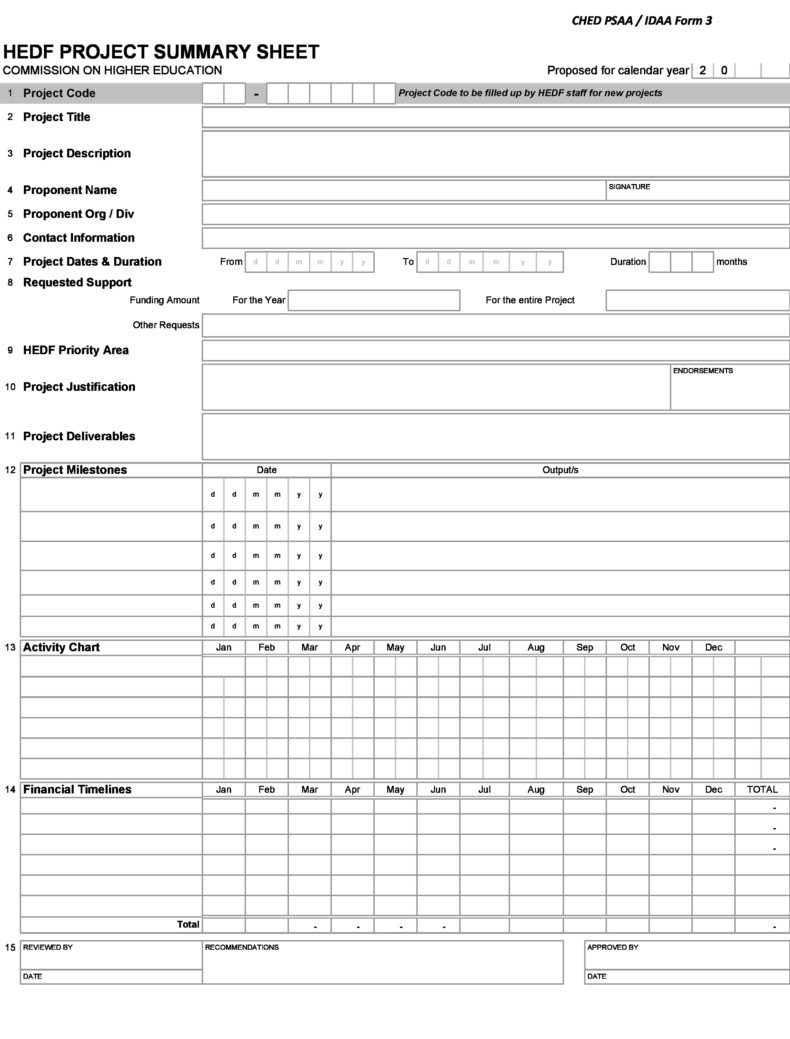
Project recap template with deliverables and justification - Download Link
Tips to Improve Your Project Summary
When preparing your project summary, there are a few things that you should consider.
Let’s break this down:
Avoid Using Complex Wording
Your summary is not only for stakeholders to read; you could create a document that an investor may read in search of broad strokes or other pertinent information.
Hence, you shouldn’t overcomplicate things, avoid technical words and use common jargon.
Keep It Clean And Short
The project summary is exactly that, a brief. So, you should only include the most important information to understand your project and the outcome.
Don’t add sections like “environmental study” or “market share” when you can explain that in another part of the project plan.
Instead, use the summary space to be concise, useful, and short.
Ask Your Teammates
As a project manager, you must use your resources to gather information.
Talk to your team, ask for essential information, and deliver a clean summary that satisfies all stakeholders and shareholders.
Update Your Summary’s Format
Things evolve, and so does your project summary.
So, review and check it periodically to ensure everything is up to date and explains the project in a few sentences.
Ease Up Your Project Manager Burden With a Project Summary Template
The Project Summary Template is a powerful tool that enhances project management efficiency and promotes effective stakeholder communication. When you embrace this resource, you ensure that projects remain on track, maintain clear objectives, and succeed.
As you continue your project management journey, remember that a well-crafted Project Summary Template is only as valuable as your commitment to its consistent use and ongoing refinement.
So, use the templates above, adapt them to your unique needs, and keep stakeholders engaged. With this robust tool in hand, you'll be well on your way to mastering the art of project management and delivering outstanding results.















